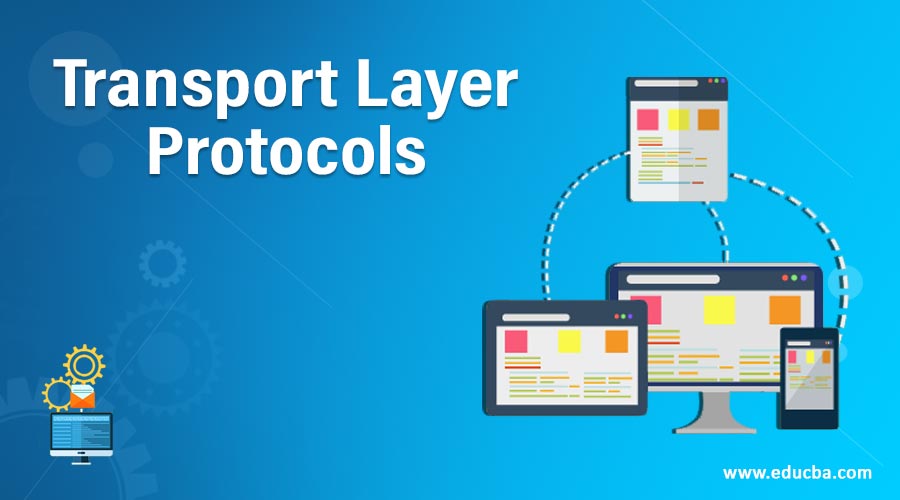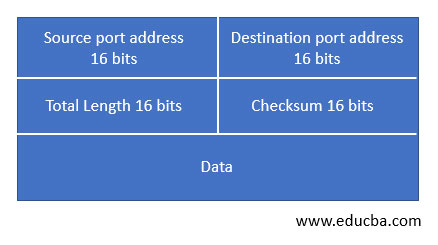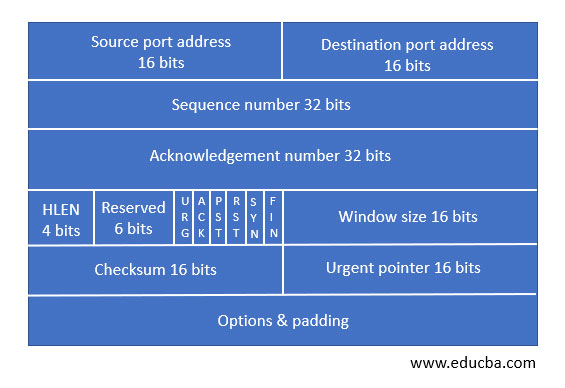Updated October 25, 2023

Introduction to Transport Layer Protocols
With the increasing complexity of the Internet and wide-scale use of computers, several programs are run on to computers at the same time. Computers are constantly sending and receiving several messages. The computers that send and receive each transmit messages from one computer to the next, but also from one computer to another. Connectionless and connection-oriented can exist for a transportation layer protocol. Every segment is treated as independent first packets and transported to the destination machine transport layer in connectionless. And, after establishing links between transport layers of source and destination, each segment is transferred in a connection-driven way. The transport layer is the center of the entire hierarchy of the protocol. Two protocols display the transport layer.
1. UDP
2. TCP
What is UDP?
The full form of UDP is User Datagram Protocol. It is a connectionless protocol. UDP is a transport-level end-to-end protocol that adds addresses of transport-level, control of errors in the checksum, and data lengths from the top laying. The UDP protocol packet is called a user datagram. A 16-byte header is shown in the user’s Data Chart below:
In this, you will see the components such as
- Destination Port Address: The address of the request process to receive the message is specified. The address of the destination port is 16-bit.
- Checksum: The control is a 16-bit field used to detect errors.
- Total Length: This determines the user datagram’s total length in bytes. It’s an area of 16 bits.
- Source Port Address: The application process address that has sent a message is specified. The address of the source port is 16-bit.
Examples of services and programs that are UDP are DNS, IP telephony, and DHCP.
Disadvantages of UDP
- UDP can notice that there has been an error, but does not indicate which packet has been lost because it does not have an ID or a data sequence number.
- 3This does not have a sequence or reorder feature and when recording an error, it does not indicate the damaged package.
- UDP offers critical features required for end-to-end transmission delivery.
What is TCP?
TCP is also known as Transmission Control Protocol. It is a connection-oriented transport protocol. TCP is a protocol that specifies how network connections can be developed and maintained under which applications can share data. TCP uses the Internet Protocol (IP) to describe how computers transmit data packets to each other. Example of services and programs that uses TCP are HTTP, HTTPS, FTP as well as many computer games.
- Control Bits: Each control area operates independently and individually. The control bit specifies the operation of a segment or serves for certain fields as a validity test.
- Acknowledgment Number: The data of other communication devices is acknowledged by a 32-field acknowledgment number. If ACK is set to 1, the sequence number the receiver expects to receive is specified.
- Header Length: The TCP header in 32-bit words will be specified. The header is 5 words in minimum size and the header is 15 words in full size. There are also 60 bytes for the TCP header, and 20 bytes for the UDP header.
- Source Port Address: It is used in a source machine for specifying the application’s address. It’s a space of 16 bits.
- Sequence Number: A data stream is divided into two or more parts of TCP. The 32-bit number sequence field is the location of the data within an original data stream.
- Destination port Address: This is used in a destination machine to identify the address of an application program. It’s a field of 16 bits.
Features of TCP Protocol
- Multiplexing: Multiplexing is a method of accepting and forwarding data on separate computers from various applications to each server. The data is sent to the right device at the receiver’s end. It is called demultiplexing. Through using the logical channels known as ports, TCP transmits the packet to the appropriate program.
- Full Duplex: TCP offers Full Duplex operation, i.e. simultaneously data flux in both directions. Can TCP have buffers sent and received so that the segments can flow in both directions for full-duplex services? TCP is a protocol that binds. Assume that process A requires the data from process B to be sent and received.
- Flow Control: Once TCP receives a data packet, it returns to the sender displaying the number of bytes without exhausting the internal buffer. In ACK, the number of bytes is sent as the highest sequence number, which it can easily obtain. It is also known as the window process
- Logical Connections: A logical relation is called the combination of sockets, sequence numbers, and window sizes. The pair of sockets used by sending and receiving processes are used to classify each connection.
Conclusion
In this article, we have seen what are transport layer protocols, their working along with their advantages and disadvantages.
Recommended Articles
This is a guide to Transport Layer Protocols. Here we discuss an introduction Transport Layer Protocol, what is UPD and TCP with feature, advantages and disadvantages. You can also go through our other related articles to learn more –



